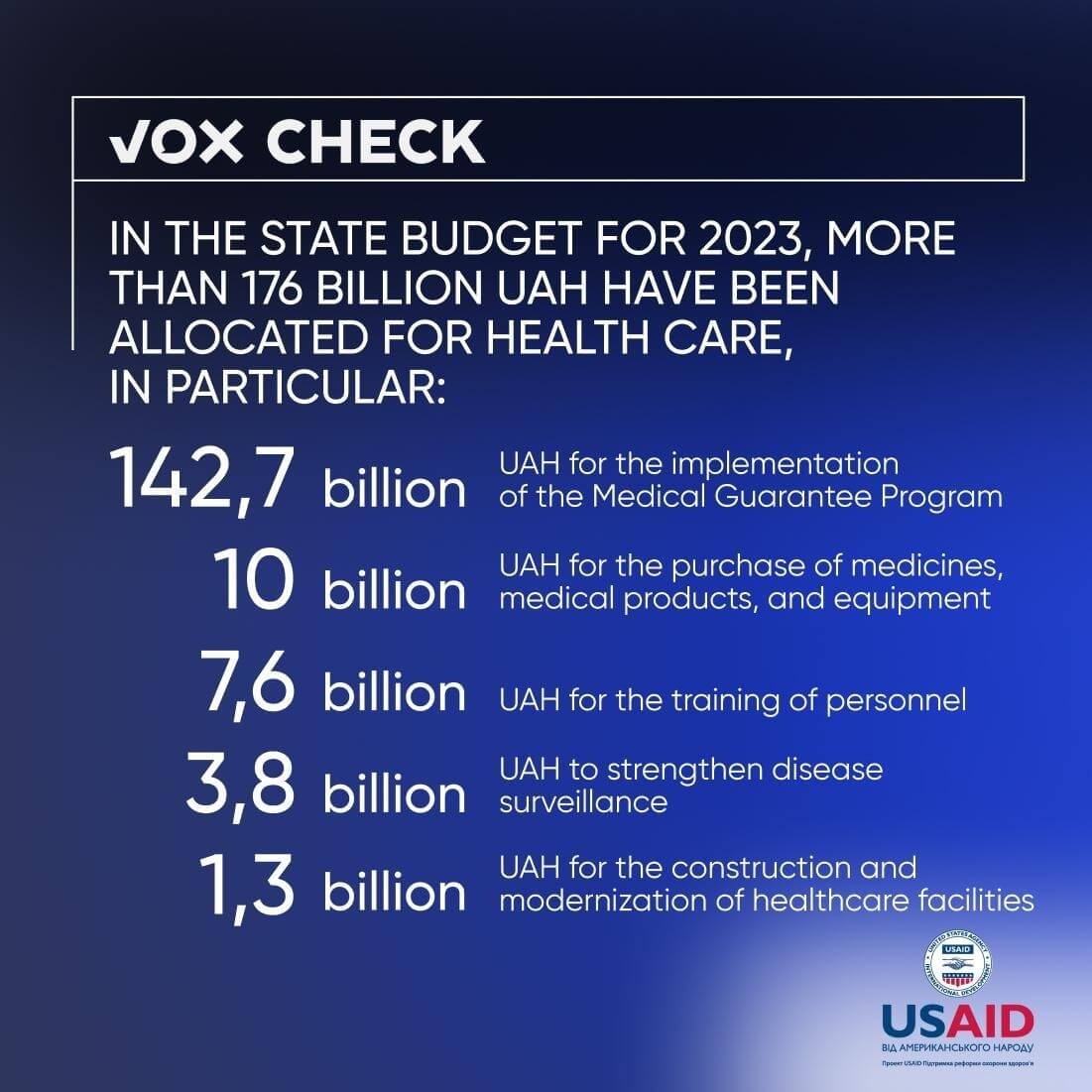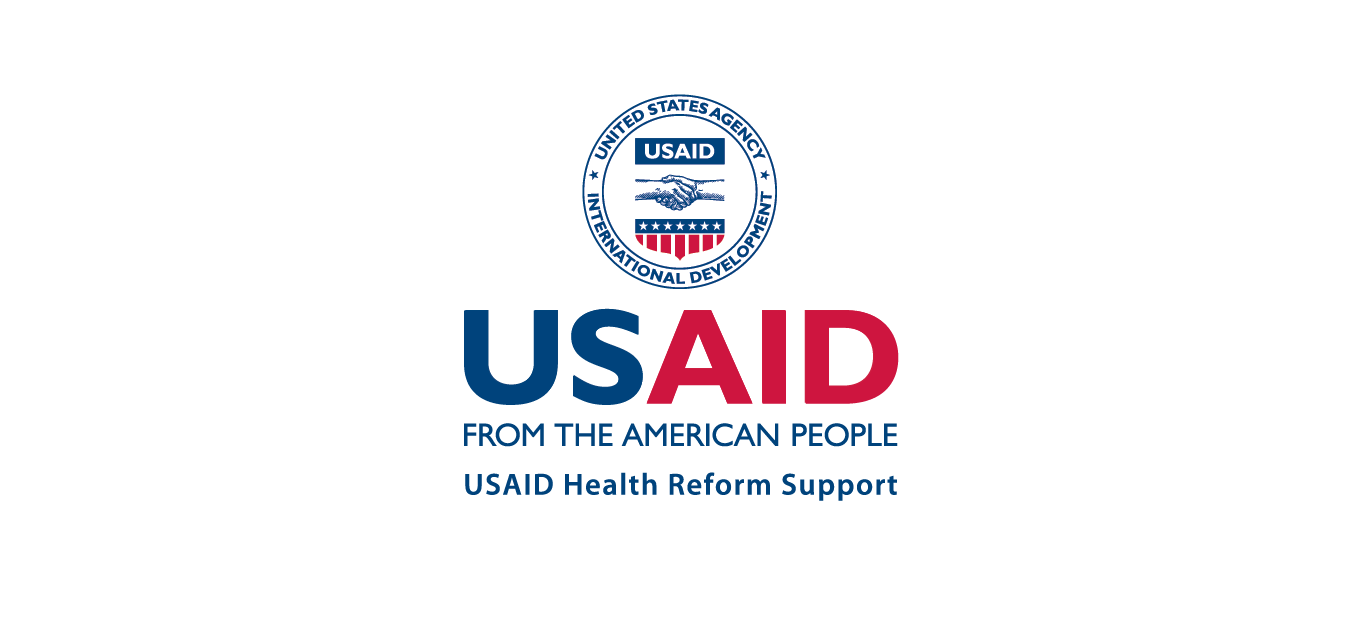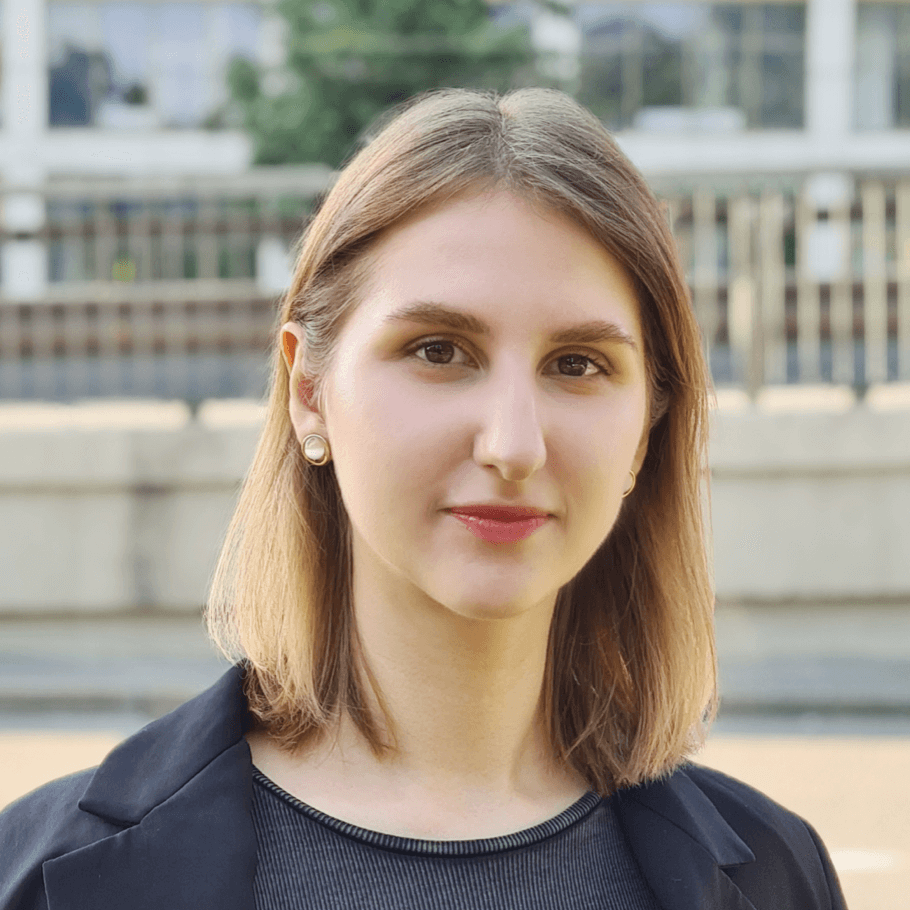In this issue, we refute the statement of Ukrainian blogger Denys Yelisevych, that Ukraine spends $6 billion on the Ministry of Health every year. He also considered that it would be more profitable to disband it and to direct part of these funds to health insurance for all those who cannot do it on their own. According to Yelisevich, such an innovation will save money. In the second case, the Russians said that the Volyn Regional Psychiatric Hospital and the Volyn Medical Center for Addiction Therapy would be merged, and 33 medics would be sent to the front. They added that a summons had already been issued to the head of the psychiatric hospital.
With the support of the USAID Health Reform Support project, VoxCheck analyzes and refutes public health narratives spread in the information space of Ukraine, Belarus, and russia on a weekly basis.
Disinformation: The state wastefully spends $6 billion a year on the Ministry of Health of Ukraine
Ukrainian blogger Denys Elisevych claims that the state spends $6 billion a year on the Ministry of Health of Ukraine. According to him, for half of this budget, the state can buy health insurance for all those who cannot buy it on their own. It is supposedly better to save the second part of the budget and to privatize all state medical institutions.
What’s the reality?
Denys Elisevych himself previously left for the United States and is not the first to play along with Kremlin propaganda. Thus, the blogger publishes numerous videos discrediting Volodymyr Zelenskyi: allegedly, a dictatorship similar to Putin’s model of rule has been established in Ukraine. In addition, the blogger promotes a narrative about the need to “privatize” state medical institutions. In fact, the law “On Privatization of State and Communal Property” states that it is prohibited to privatize state healthcare institutions, as well as the premises in which they are located.
In fact, Elisevych provides incorrect data on annual medical expenses. In the state budget for 2023, more than 176 billion UAH were allocated to the Ministry of Health, or a little more than $4.5 billion at the current exchange rate.
The blogger says that for half the state budget, the state could allegedly purchase health insurance for everyone who does not have the opportunity to issue it. In general, there are two types of health insurance — corporate, which is provided by companies, and voluntary, which can be issued by anyone who wants to. Although in some European countries health insurance is mandatory.
Minister of Health of Ukraine Viktor Lyashko notes that medical insurance in Ukraine also works through the Medical Guarantee Program. That is, part of the taxpayers’ money is kept in the insurance fund and will be used in the future for the implementation of assistance. In addition, through the Program of Medical Guarantees, Ukrainians with chronic diseases can receive a certain list of medicines for free or with a small surcharge. Currently, the Ministry is developing two types of voluntary health insurance — pharmaceutical and insurance for services not covered by the Medical Guarantee Program.
In addition to the Medical Guarantee Program, state funds are also spent on the purchase of medicines, equipment, increased monitoring of infectious and non-infectious diseases, construction and modernization of medical facilities, training and advanced training of medical personnel, information work among the population, etc. All these needs cannot be covered by the populist decision to “spend the Ministry’s budget on the purchase of insurance.”
Source: Law “On the State Budget of Ukraine for 2023”
On September 15, 2023, the Cabinet of Ministers approved the draft state budget for 2024. Among the priorities, the Prime Minister named the defense, social spheres, medicine, education, support for veterans, and the recovery of Ukraine’s economy. The government allocated 202 million UAH for medicine, which is 24 million more than in 2023.
Disinformation: In Lutsk, 33 medical workers will be fired to be sent to the front
Information is spread online that the Volyn Regional Psychiatric Hospital and the Volyn Medical Center for Addiction Therapy will be combined to fire 15 psychiatric hospital doctors and 18 addiction center employees. The authors indicate, allegedly, that these 33 people will be denied postponement from mobilization and will be sent to the medical company of 14 brigades of the Armed Forces of Ukraine. The post also wrote that the directors of both institutions were fired because they spoke out against such a “machination”, and one of them, Ihor Shkarovetskyi, received a summons.
What’s the reality?
The medical staff of both hospitals are not planned to be laid off, nor are there any plans to mobilize them to the 14th Ombre or any other unit. The decision to reorganize the institution was made by the Volyn Regional Council even before the full-scale invasion. On December 9, 2021, deputies decided to reorganize the psychiatric hospital, joining it with the Volyn Medical Center for Addiction Therapy. This decision provided for the dismissal of the heads of both institutions, but the rest of the employees were not going to be dismissed. In addition, consolidation should have helped to attract more funds from the state budget for the development of the institution.
However, on March 16, 2023, regional council deputies canceled this resolution and decided to reorganize the Volyn Medical Center for Addiction Therapy. Therefore, the hospital will take over the rights and responsibilities of the center, and the property of the center will become the property of the psychiatric hospital. Deputies explained that after the full-scale invasion, the mental hospital had 130 beds, and now there are 617 patients in the institution. “Considering the fact that in the future we want to consolidate it (the facility) and make it a powerful center for psychiatric rehabilitation and recovery, we add smaller to bigger,” said the head of the department for management of jointly owned objects, Olena Kuzmenko.
In addition, according to the head of the Volyn Regional Council Hryhorii Nedopad, there are no plans to lay off other employees. “There are no negative consequences for employees yet. There is a certain number of people who have to work from the two institutions. We are starting from this number,” the official said. Instead, the staff may have to be expanded, as the number of beds is planned to increase as part of the reorganization. Serhii Dudka also confirmed that there will be no layoffs. We were also unable to find news about the issuance of a summons to the ex-director of the Volyn Medical Center for Addiction Therapy, Ihor Shkarovetskyi.
He noted that psychiatry and narcology are related disciplines, so the institutions decided to merge. This practice is widespread in Ukraine. Hryhorii Nedopad also explained that after consolidation, the institution will be able to sign a general package with the National Health Service of Ukraine and receive more funds. “It is actually a requirement of time to get into a capable network to provide better services. This is not my personal whim, it was the decision of both the commission and the deputies. We are fully supported by the healthcare department of the Volyn Regional State. This is a procedure that will allow effective management of medical institutions,” said the head of the regional council.
The unification of various medical institutions with related areas takes place within the framework of the third stage of medical reform on the creation of a capable network. This reform will improve the quality of medical services and make free medical care available to residents of villages and towns.
Depending on the type of medical facility, the number of services will vary. Therefore, simple diseases will be treated at family doctors or general hospitals, which will be available to the patient within a radius of 60 km or within 60 minutes by transport. More complex diseases will be treated in cluster and super-cluster medical facilities equipped with the necessary high-tech equipment. Thanks to the prioritization of resources, public funds will be directed to those institutions where they can help patients in the shortest possible time.
General hospitals will have 6 basic areas: anesthesiology, neurology, infectious diseases, orthopedics and traumatology, therapy, and surgery. The cluster centers will have departments of cardiology, allergology, dermatovenerology, psychiatry, etc. The supercluster ones will contain the largest range of services, in particular in the areas of gastroenterology, neonatology, endocrinology, intensive care, cardiac surgery, otolaryngology, pulmonology, vascular surgery, etc.
In 2023, the reform will begin in 19 regions. According to the latest available data (at the time of writing), the capable network includes 542 medical institutions: 275 general, 149 cluster and 118 supercluster hospitals. We wrote more about the infrastructural stage of the medical reform in one of the previous issues.
This information piece was produced with the assistance of the United States Agency for International Development (USAID), provided on behalf of the people of the United States of America. This article’s content, which does not necessarily reflect the views of USAID, the United States Government, is the sole responsibility of Deloitte Consulting under contract #72012118C00001.
Attention
The authors do not work for, consult to, own shares in or receive funding from any company or organization that would benefit from this article, and have no relevant affiliations





